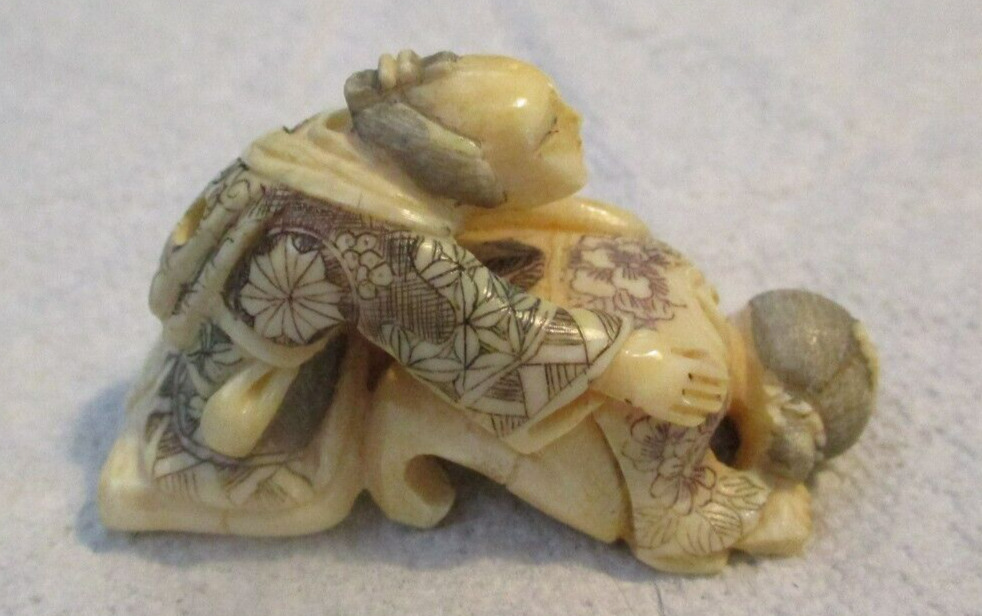-40%
Carved Wood Shou Bead Pendant Netsuke Black Wooden 32mm x 21mm
$ 21.11
- Description
- Size Guide
Description
Vintage AsianHand Carved
Wooden
NETSUKE SHOU BEAD PENDANT
We were thrilled to purchase several different Netsuke Beads from an Estate Sale. These beauties are in excellent condition and show no signs of use.
Approximate Measurements: 32mm x 21mm
Material: Wood
Color: Black
Condition: Excellent
Age: Unknown
Carving Theme: Shou is a Chinese Symbol for long life and good health
Please review our detailed photos and message us with any questions.
A DESCRIPTION OF NETSUKE:
The word Netsuke is written in Japanese with two characters (
根付
) meaning “root” and “attached”. It is therefore said that the first Netsuke were probably simple pieces of root or wood, or other natural materials such as shells, stones, etc. attached to the cord.
Netsuke is an ornamental toggle like carved bead used to attach a medicine box, pipe, or tobacco pouch to the obi (sash) of a Japanese man's traditional dress. During the Tokugawa period (1603–1868), netsukes were an indispensable item of dress as well as being fine works of miniature art.
It is important to note that small carvings are not Netsuke. To be a Netsuke, the carving must have one or two holes to allow attachment to the *Sagemono or Inro case. (Sagemono or Inro are traditional Japanese cases for holding small objects, suspended from the obi worn around the waist when wearing kimono.)
The period from 1804 to 1830 saw netsuke at its zenith as a practical accessory and loved by many regardless of social standing. Its importance, however, declined over the Meiji Period (1868-1912) as the kimono gave way to western dress. Unexpectedly however, netsuke became an eye-stopper for European and American visitors after the country ended its isolation. The Meiji government began encouraging the export of netsuke as artwork and it became a sought after item for art collectors. Today there are many non-Japanese enthusiasts and many fine collections of netsuke held in art museums around the world. But despite the high appraisal of netsuke abroad, the level of awareness in Japan continues to be low.
During the 1970s, the netsuke world saw a new movement. A group of enthusiasts and artists began carving netsuke as contemporary art, ushering in the era of contemporary netsuke. This new movement expanded the possibilities of netsuke materials and motif designs, and created an exciting challenge for new themes and materials that continues to this day.
















